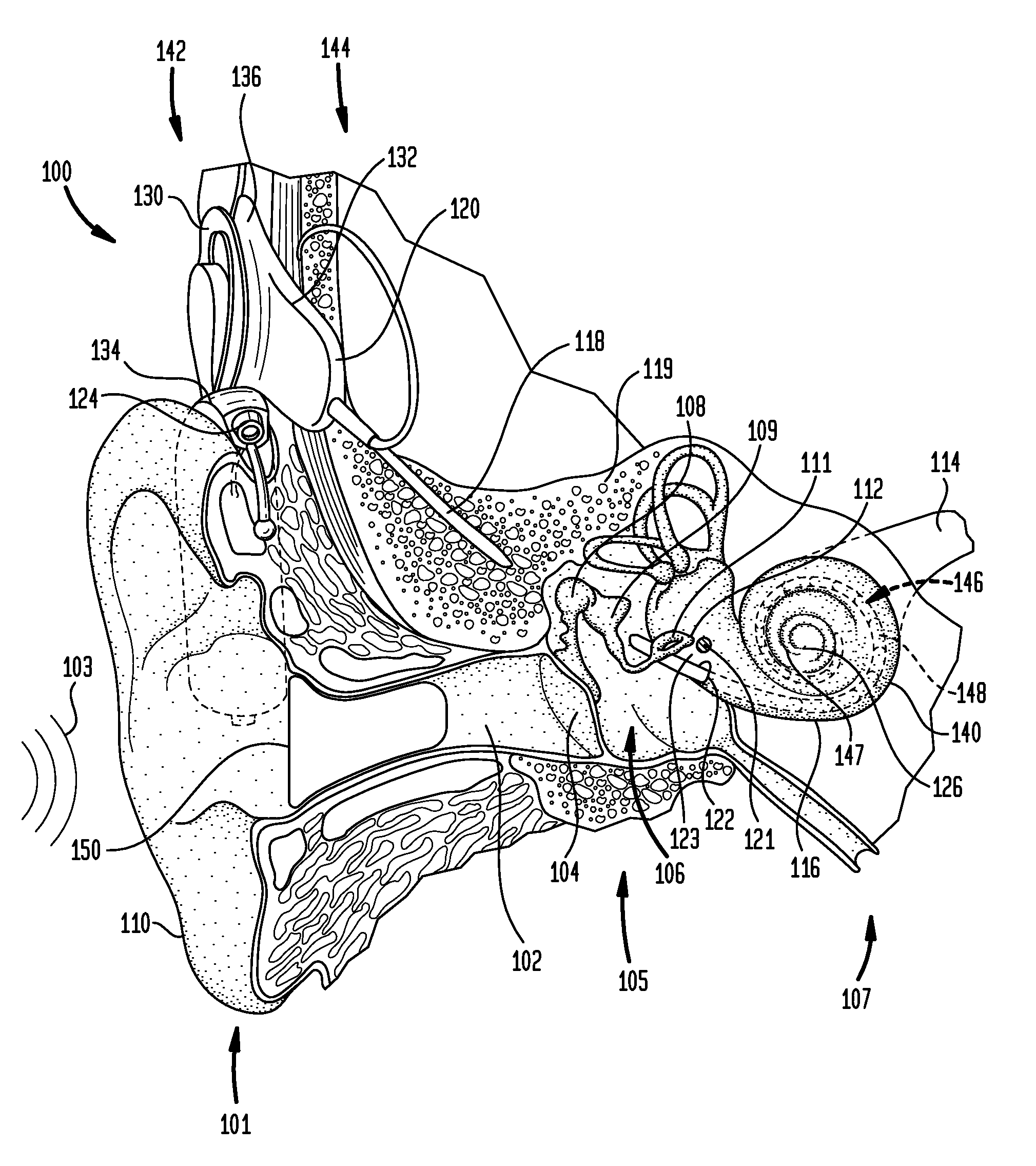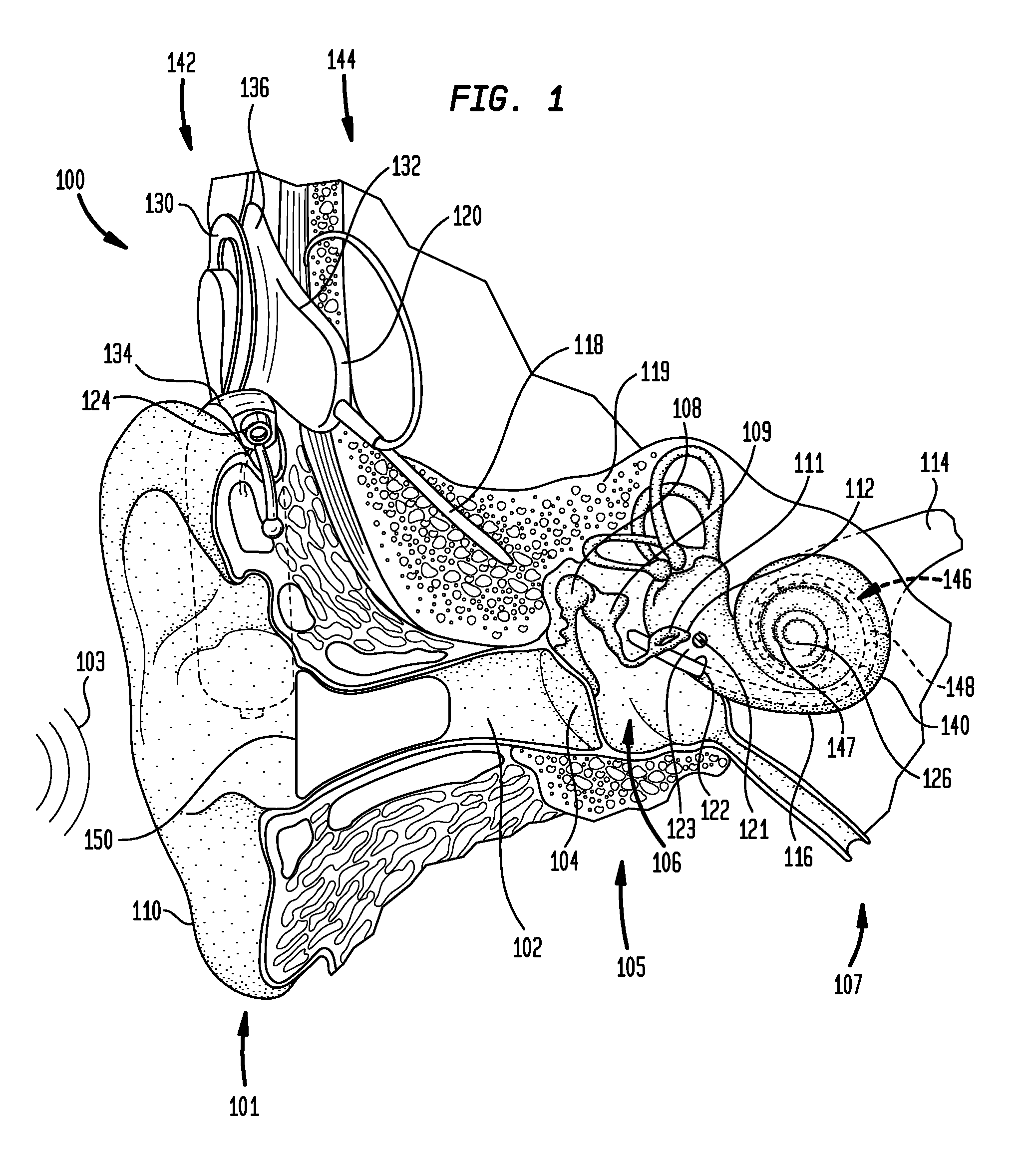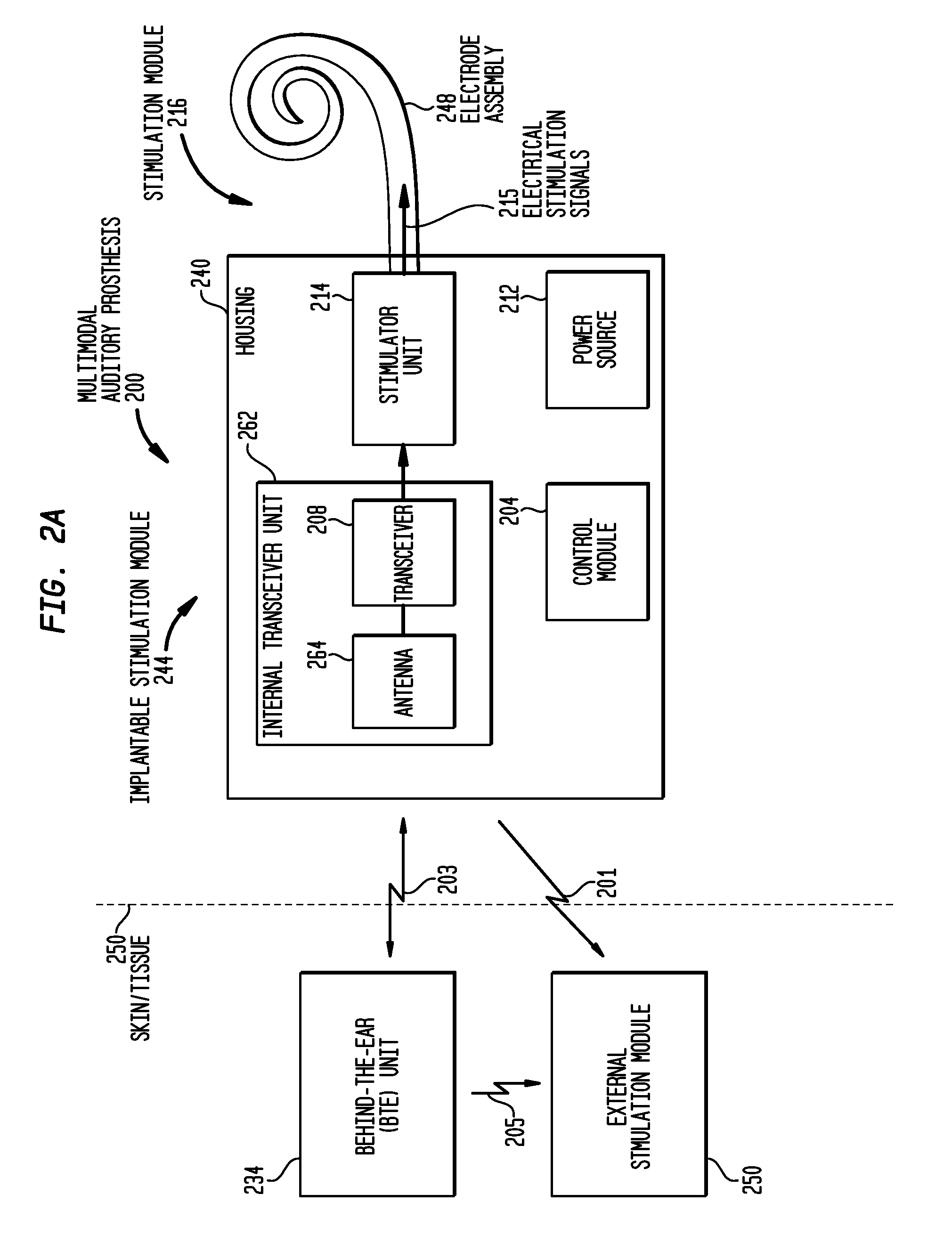Wireless communication in a multimodal auditory prosthesis
a multi-modal, wireless communication technology, applied in the direction of electrical equipment, electrotherapy, artificial respiration, etc., can solve the problems of conductive hearing loss, impeded normal mechanical pathways that provide sound to hair cells in the cochlea, and sufferers of sensorineural hearing loss are thus unable to derive suitable benefits from auditory prostheses
- Summary
- Abstract
- Description
- Claims
- Application Information
AI Technical Summary
Benefits of technology
Problems solved by technology
Method used
Image
Examples
Embodiment Construction
[0023]Aspects of the present invention are generally directed to wireless communication in a multimodal auditory prosthesis. The multimodal auditory prosthesis comprises a sound processing unit configured to process sound and to generate electrical signals representing different frequency components of the processed sound. A stimulation module is communicably coupled to the sound processing unit and is configured to stimulate the recipient to evoke a hearing percept of a range of the frequency components. The prosthesis also comprises an external stimulation module that is configured to be positioned within an externally accessible portion of the recipient's ear. The external stimulation module comprises a receiver unit to wirelessly receive electrical signals representing frequency components of the processed sound, and a transducer that delivers acoustic or mechanical energy to the recipient's ear to evoke a hearing percept of a range of the frequency components of the processed s...
PUM
 Login to View More
Login to View More Abstract
Description
Claims
Application Information
 Login to View More
Login to View More - R&D
- Intellectual Property
- Life Sciences
- Materials
- Tech Scout
- Unparalleled Data Quality
- Higher Quality Content
- 60% Fewer Hallucinations
Browse by: Latest US Patents, China's latest patents, Technical Efficacy Thesaurus, Application Domain, Technology Topic, Popular Technical Reports.
© 2025 PatSnap. All rights reserved.Legal|Privacy policy|Modern Slavery Act Transparency Statement|Sitemap|About US| Contact US: help@patsnap.com



